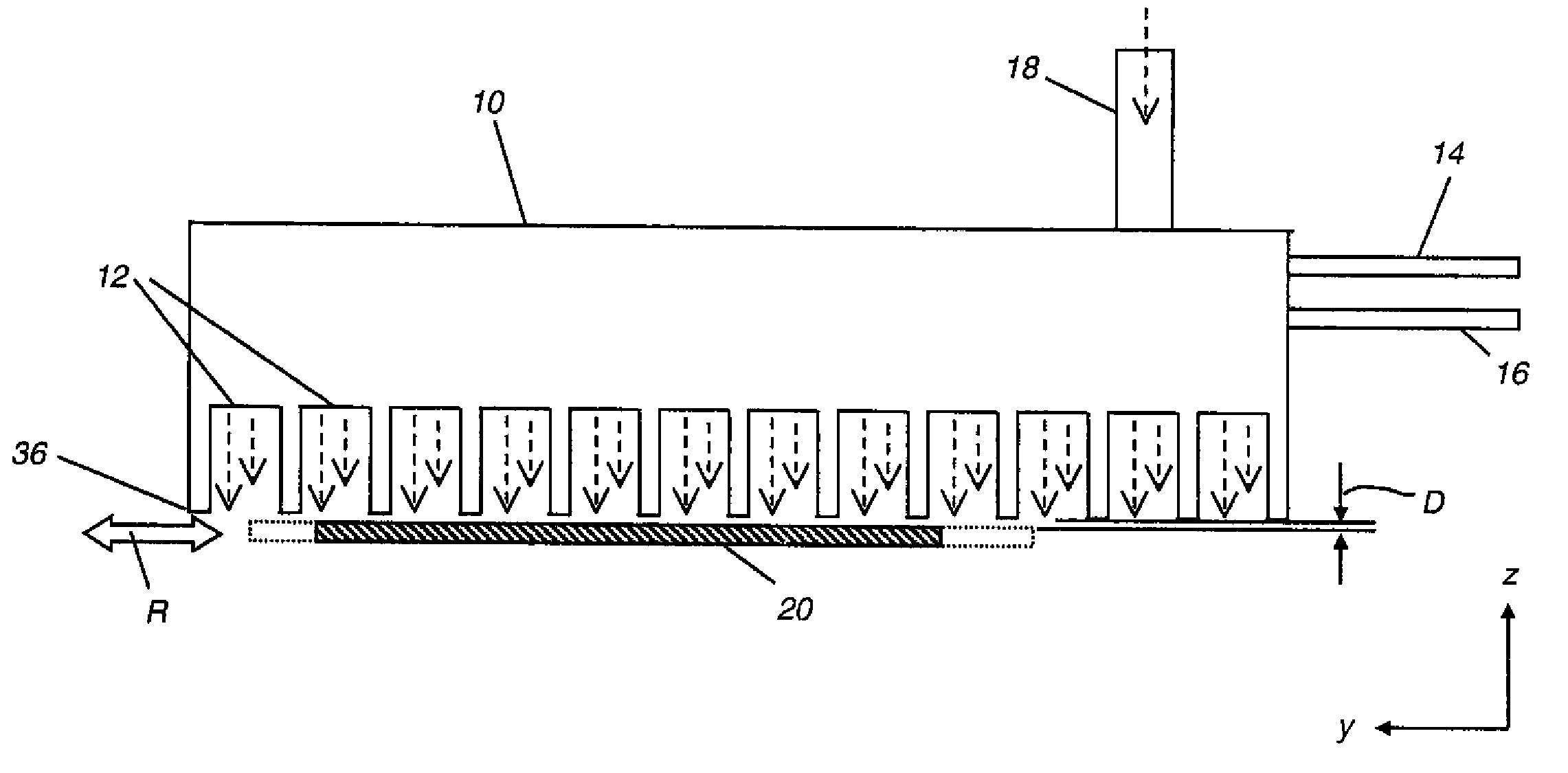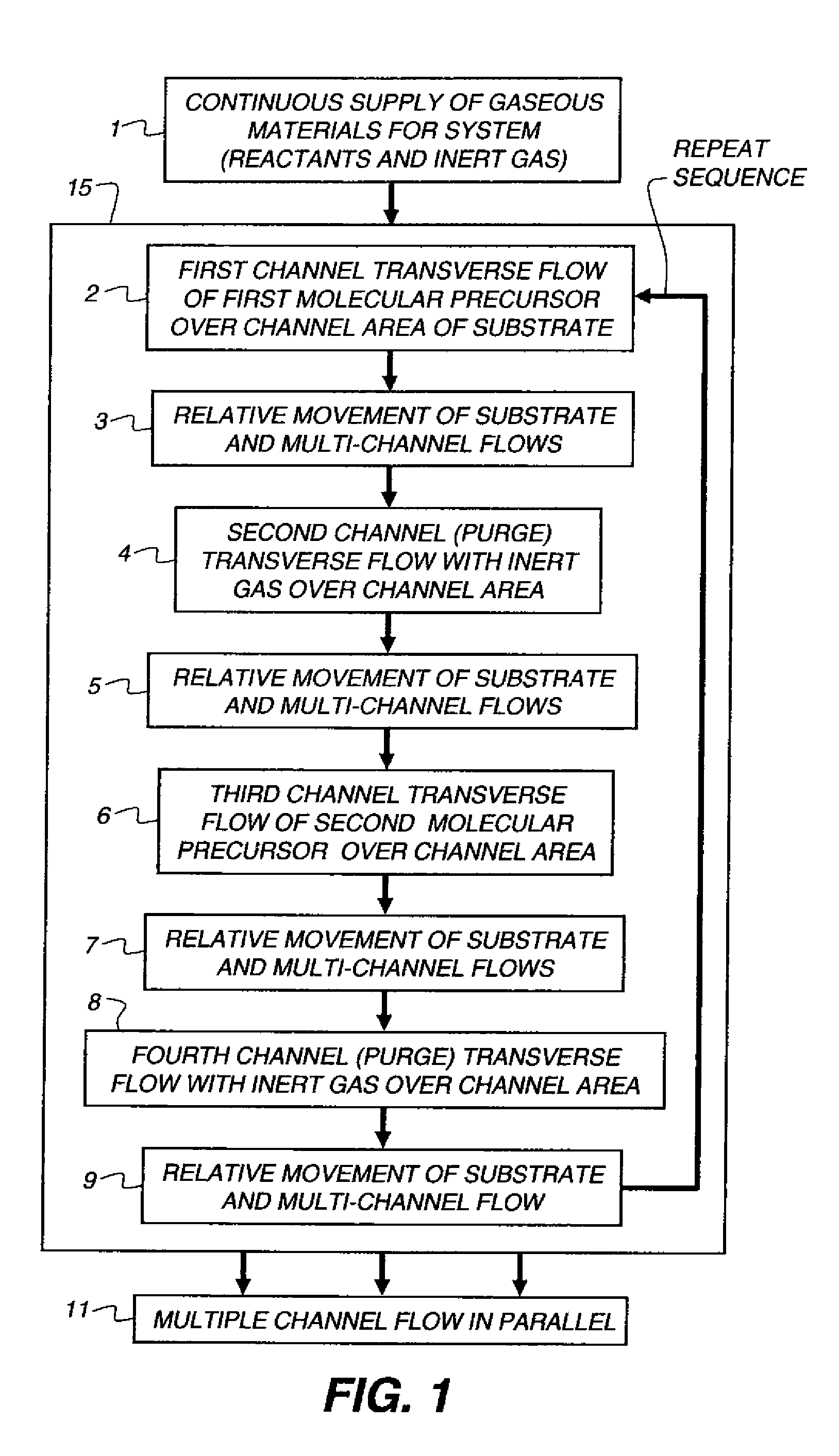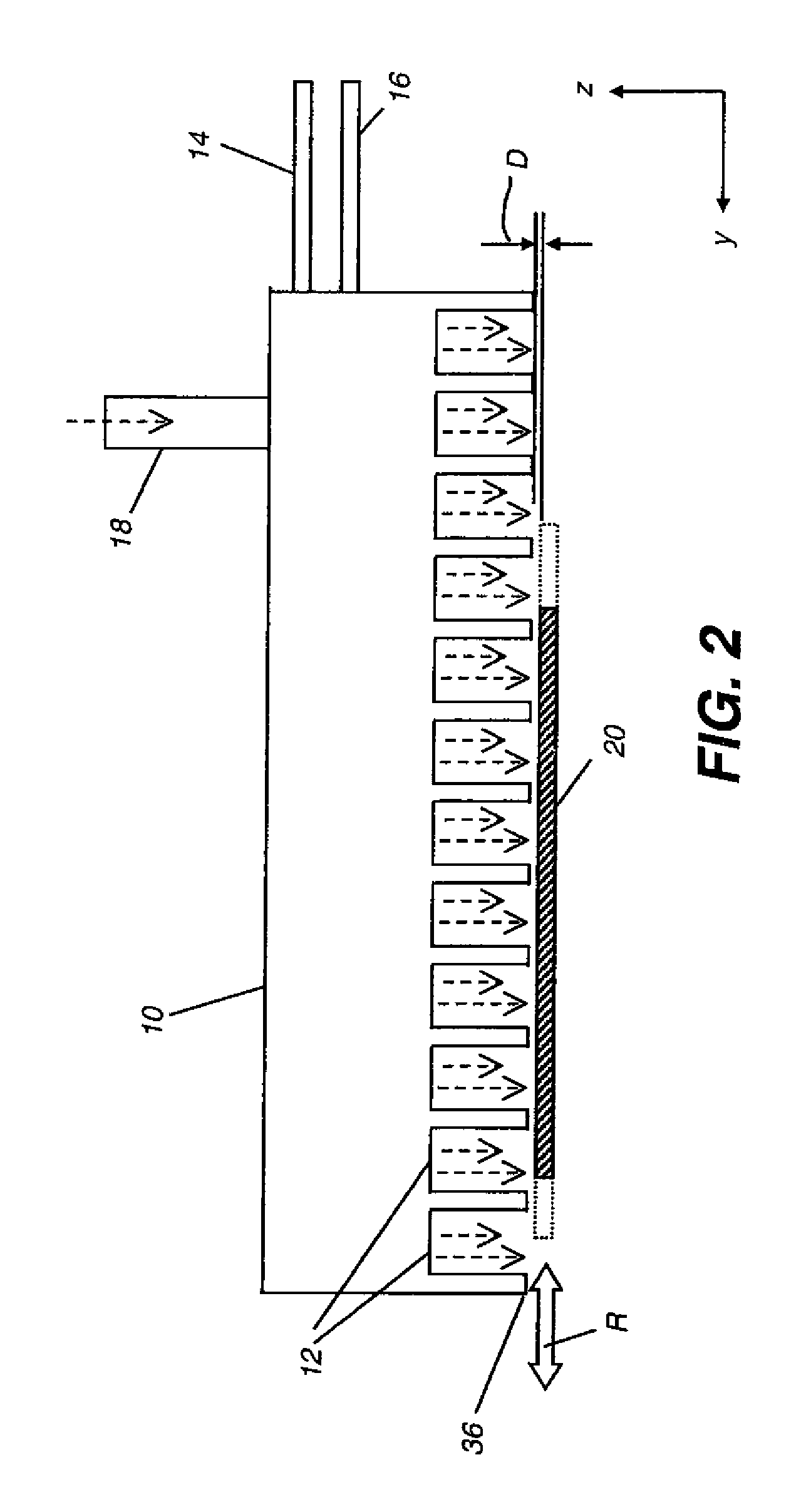Increased inkjet printed density
a technology of inkjet printing and density, applied in printing, typewriters, duplicating/marking methods, etc., can solve the problem of more difficult to achieve good densities, and achieve the effect of improving the printed density
- Summary
- Abstract
- Description
- Claims
- Application Information
AI Technical Summary
Benefits of technology
Problems solved by technology
Method used
Image
Examples
example
[0030]Three pieces of commercially available porous inkjet media (Kodak Everyday Picture Paper) were taken and on two of these samples layers of Al2O3 of various thicknesses were deposited directly onto the surface of the media using AP-ALD. Coating A had a 5 nm layer of Al2O3 deposited on the surface of the inkjet receiver and coating B had a 15 nm layer of Al2O3 deposited on the surface of the inkjet receiver using the conditions shown in Table 1. The other sample was left untreated to act as a comparison (the control).
TABLE 1AP-ALD conditions used to deposit layers of Al2O3Bubbler 1MaterialWaterFlow rate22 ml / minBubbler 2MaterialTrimethyl aluminiumFlow rate48 ml / minCarrier gas flowInert (N2)2000 ml / minWater (compressed air)300 ml / minMetal (N2)200 ml / minTemperaturePlaten95-105° C.Coating Head50° C.Deposition SettingsPlaten speed50 mm / secHead height55 μmCoating ANo. of oscillations 50Thickness of Al2O3 Layer~5 nmCoating BNo. of oscillations100Thickness of Al2O3 Layer~15 nm
[0031]An ...
PUM
| Property | Measurement | Unit |
|---|---|---|
| thick | aaaaa | aaaaa |
| thick | aaaaa | aaaaa |
| thick | aaaaa | aaaaa |
Abstract
Description
Claims
Application Information
 Login to View More
Login to View More - R&D
- Intellectual Property
- Life Sciences
- Materials
- Tech Scout
- Unparalleled Data Quality
- Higher Quality Content
- 60% Fewer Hallucinations
Browse by: Latest US Patents, China's latest patents, Technical Efficacy Thesaurus, Application Domain, Technology Topic, Popular Technical Reports.
© 2025 PatSnap. All rights reserved.Legal|Privacy policy|Modern Slavery Act Transparency Statement|Sitemap|About US| Contact US: help@patsnap.com



